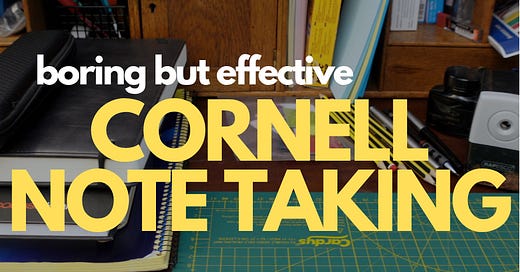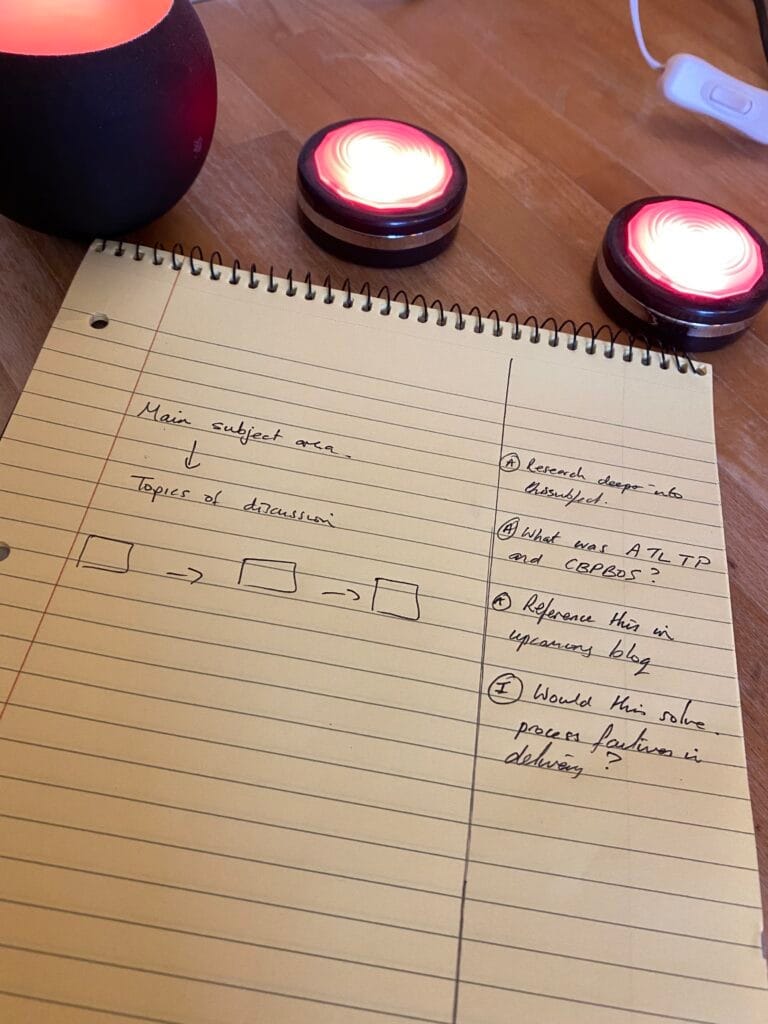CSP 013 - The Surprisingly Simple Power of the Cornell Note Taking Method
And why I shunned it for years.
Hey Creative Souls,
I hope you are safe and well.
I didn’t quite get around to writing last weekends Soul Food newsletter - apologies - the weekend just got away with me.
Thank you to all the new subscribers - and I hope you enjoy the content coming from Creative Soul Projects.
Cornell Note Taking Method
Confession time: when I first heard about the Cornell Note Taking Method, I dismissed it. It sounded dull, overly structured, and frankly, a bit academic. But after years of trying various note-taking techniques, I decided to give it a shot – and I was hooked.
Check out the video, and/or read on below.
Please note, as I transition my YouTube branding over to the Creative Soul Projects from Cultivated Management, videos like this one will still include in-video references to Cultivated Management.
The Cornell Method: A Breakdown
The Cornell Method is incredibly straightforward. You divide your page into two main sections, typically the main body on the left hand side is about 2/3 of the page, and a narrower side on the right is about 1/3 of the page (although there are no rules really on this):
The Main Note-Taking Area: This is where you capture the core information from lectures, meetings, brainstorms, ideas, general note taking or from what you’re readings.
The Cue/Reflection Column: This smaller section, typically on the right for me, is where you jot down key points, questions, actions, or reflections related to your main notes.
Essentially, you're creating a space for both capturing information and processing it, and then being able to see clearly the notes - and the actions/reflections.
Why It Works: Clarity and Action
The beauty of the Cornell Method lies in its simplicity and effectiveness:
Separation of Information: By keeping your main notes separate from your key takeaways, you create a clear visual distinction.
Easy Review and Action: The cue column allows you to quickly identify action items, key concepts, or points for further reflection.
Enhanced Understanding: The act of summarising and reflecting in the cue column helps solidify your understanding of the material, or solidify your ideas.
Practical Application
While often associated with academic settings, the Cornell Method is surprisingly versatile. I use it for:
Meetings: Capturing decisions and action items while noting key discussions.
Learning Notes: Summarising and reflecting on information from books, articles, or workshops.
Creative Projects: Outlining ideas and brainstorming for projects.
The Result: Organised and Actionable Notes
The Cornell Method provides a structured approach to note-taking that promotes clarity, organisation, and action. It's a simple yet powerful tool for anyone who wants to improve their note-taking skills.
Don't let the name fool you. Give it a try, and you might be surprised at how effective it can be.
Thanks for reading this article. If you enjoyed this edition of CSP, feel free to share it with others.
Until next time, where I’ll be sharing more ideas about creativity, learning and communication.
Cheers
Rob..
Support Creative Soul Projects
Creative Soul Projects is a reader supported creative outlet.
Your support and membership has helped to create lots of great content, and useful resources for other creative souls, around creativity, communication and personal learning.
Here’s how you can support CSP:
The Zero to Keynote book: Available to buy in a beautiful printed version (UK only) & a delightful digital PDF version (Global).
The Take a Day Off book: Available to buy in a beautiful printed version (UK only) & a delightful digital PDF version (Global).
The Communication Superpower Workbook: Available to buy as a PDF download, designed to help you develop effective communication skills.
📒 Find more resources, free downloads and guides in the CSP Store.
🕋 Dig into the archive for great content.








